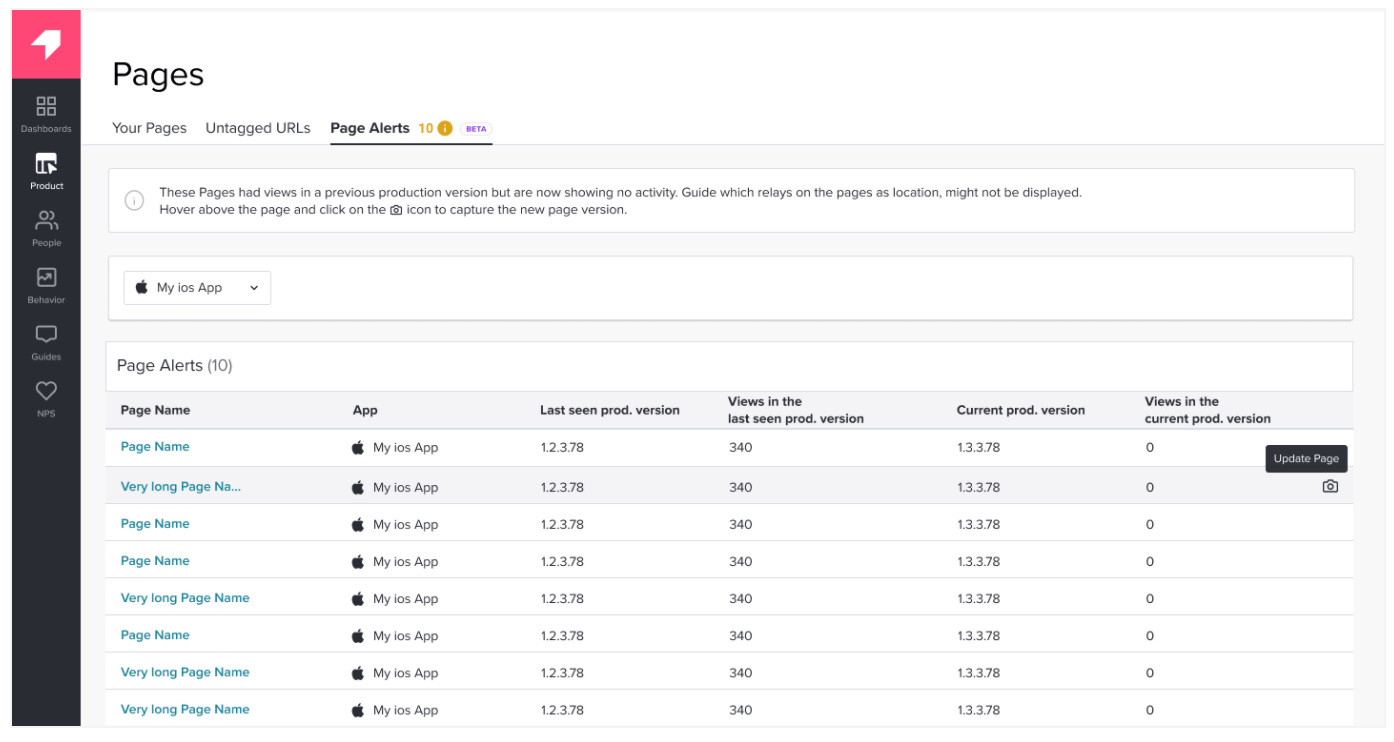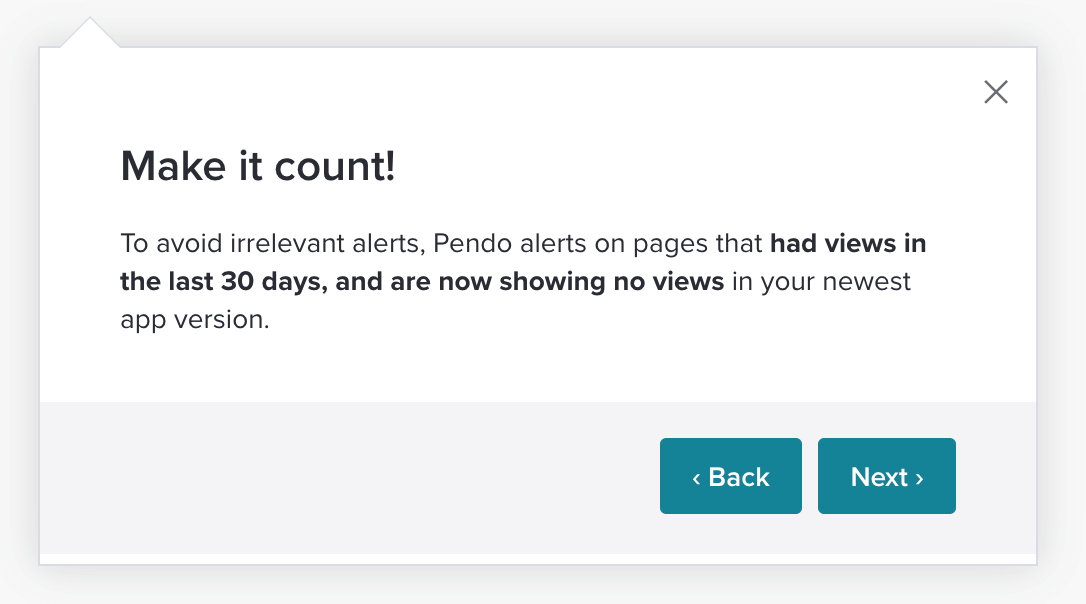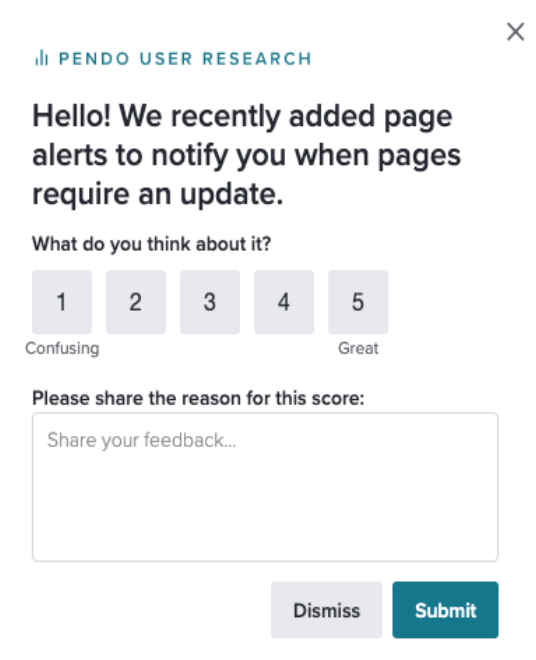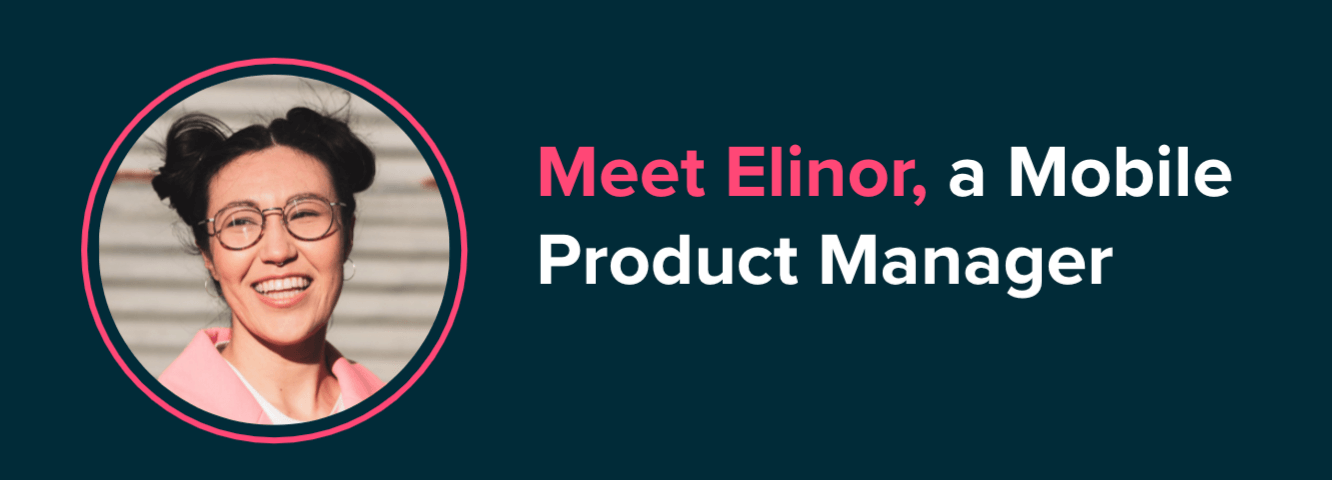Products are made to solve problems. When we think about how we’re going to solve those problems, it’s important to remember the why: making life better for people. The companies that offer the best product experiences know that customer feedback is their greatest source of inspiration, and understand that customer needs are the roots of their roadmap. They take a product-led approach—putting the voice of the customer at the heart of their development process to ensure what they’re building can effectively solve real-life challenges.
In our latest ‘Meet the Maker’ webinar, I talked with Daniel Schwartz about his product-led approach to a recent project. Daniel is a product manager on the mobile team at Pendo and led the work on our latest mobile feature. (Scroll to the bottom of this article to watch the full webinar.)
The feature Daniel had just released is called Page Alerts and you can learn more about it right here. The high level (for the mobile-curious among you!) is that Pendo now proactively shows you pages that need recapturing as you release new app versions.

Daniel took a really successful and interesting approach to defining the problem—bringing the voice of the customer into the solution throughout, and using storytelling to explain the benefits. Here’s how he did it:
How a user feels matters as much as what they do
Using customer feedback, Daniel found that there were sometimes issues with mobile analytics because users were unaware when they needed to recapture a page to collect analytics and launch in-app guides. This led to users feeling like the product was “broken” when in fact, there was already a very simple solution available to them.
As this customer pain became apparent, Daniel and the team took the time to conduct customer research to really understand the problem and how users felt. This is when a big theme emerged—trust.
Trust is a vital ingredient to a successful product. If a user doesn’t trust you, they aren’t going to use your product. Understanding user sentiment allowed Daniel and team to take a step back and define a wider mission: building trust.
Reframing the problem this way made everyone approach the feature design differently. Instead of asking ‘What can we build?’, they asked ‘How can we create trust?’. This had a really positive knock-on effect, rallying the team around a bigger goal and helping them stay close to the customer throughout the entire process.
Using a product-led approach to feature development
From there, Daniel took a very product-led approach to address customer needs: He used Pendo’s in-app guides to target good fit users with a feedback survey.
Capturing an honest and unfiltered customer experience directly in-app gave the team the data they needed to help define the solution. When they were ready to dig deeper, they conducted interviews and extensive user testing around the initial designs.
As the Minimal Viable Product (MVP) was defined, the team found the best place to start would be in proactively alerting users when pages needed to be recaptured. Starting with an MVP allowed the team to continuously gather feedback and product usage data to refine the solution further. After all, the true test of a feature is when it’s in the hands of your users.
This is where having a larger product goal helped, too. The initial MVP for Page Alerts became just one feature of many to contribute to the wider goal of increasing trust. Taking this product-led approach creates purpose and focus and gives structure to how you measure overall success.
Features are never finished: The importance of ongoing feedback
After all the hard work that goes into solving a problem and releasing a feature is finally over, it’s tempting to think the job is done. But that’s never the case in software. You should always celebrate the success of a new release—but it’s important to have a plan for what’s next, too.
With the Page Alerts feature, Daniel and team didn’t stop there. They continued with their product-led approach, ensuring two important things were in place before launch.
First, they created a series of in-app guides to onboard users to the new feature. The guides clearly explained the feature and demonstrated how to use it.

Second, Daniel created a deeper in-app feedback survey to capture data from users who interact with Page Alerts. Collecting customer feedback after a release is just as important as capturing it when conducting your initial user research.
This allowed the team to continue to refine and improve the feature, as well as understand where they should turn their attention to next.

The power of telling stories about customer pains
Throughout this entire process, storytelling played an important role in framing the technical problem as a very human one. Daniel created a fictional product manager, Elinor, and talked about the problem from her point of view.

This made the issue feel very real. And when it came time to release the Page Alerts feature, we used the story in the enablement to our internal teams, too. Helping others understand how a user feels and what they need creates understanding and empathy, and makes the whole process really digestible.
Key takeaways:
- Take a step back and link feature builds to bigger goals to give structure and purpose
- Bring the voice of the customer into feature development from inception to delivery and beyond—product feedback is an infinite loop!
- Use product analytics to understand what users are doing and target any in-app surveys to a specific audience
- Tell stories to articulate the value and keep the human at the heart of everything you’re creating
If you’d like to learn more about Page Alerts and the product-led approach that brought them to life, watch the full webinar recording here:

